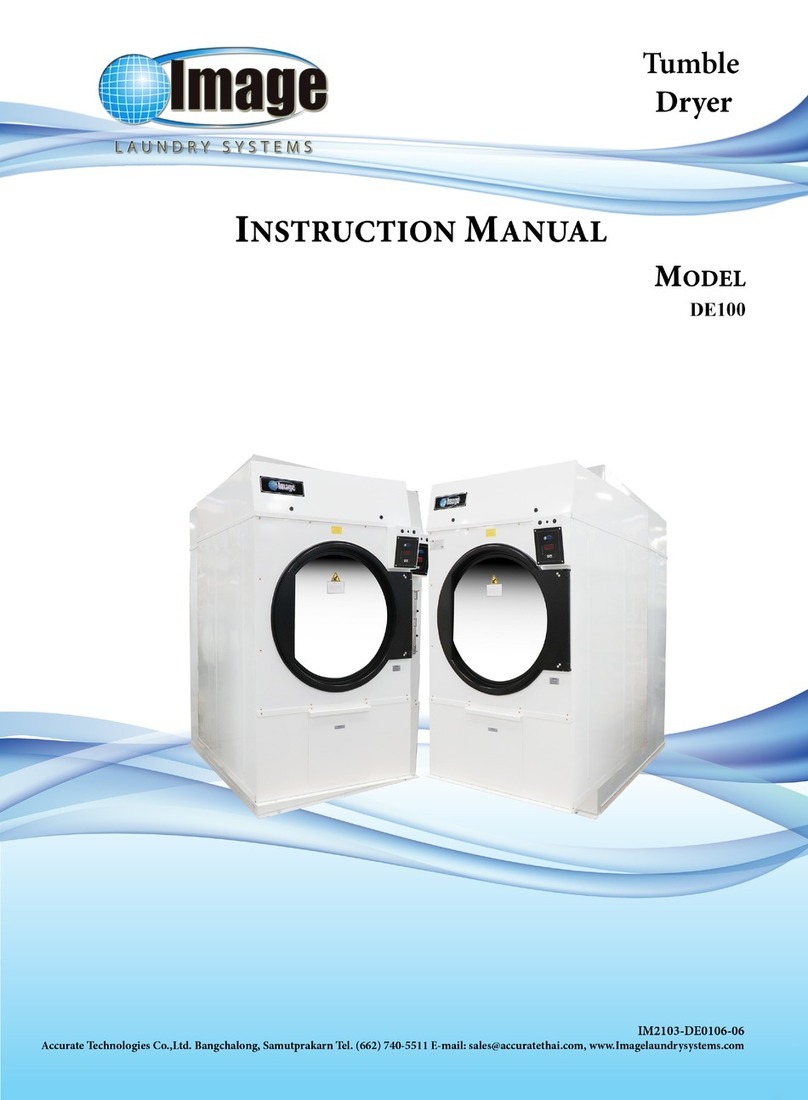
IMPORTANT INFORMATION
1-2
3. What To Do If You Smell Gas:
a. DO NOT tries to light any appliance.
b. DO NOT touches any electrical switch.
c. DO NOT uses any phone in your building.
d. Clear the room, building or area of all occupants.
e. Immediately call your gas supplier from a neighbor’s phone. Follow the gas supplier’s
instructions.
f. If you cannot reach your gas supplier, call the fire department.
4. Installation and service must be performed by a qualified installer, service agency, or the gas
supplier.
5. Dryer(s) must be exhausted to the outdoors.
6. Although Dryer produces a very versatile machine, there are some articles that, due to fabric
compositional cleaning method, should not be dried in it.
WARNING: Dry only water – washed fabrics. DO NOT dry articles spotted or washed in dry
cleaning solvents, a combustible detergent, or “all purpose” cleaner. EXPLOSION
COULD RESULT.
WARNING: DO NOT dry rags or articles coated or contaminated with gasoline, kerosene, oil,
paint, or wax. EXPLOSION COULD RESULT.
WARNING: DO NOT dry mop heads. Contamination by wax or flammable solvents will create a
fire hazard.
WARNING: DO NOT use heat for drying articles that contain plastic, foam, sponge rubber, or
similarly textured rubber materials. Drying in a heated basket (tumbler) may damage
plastics or rubber and also may be a fire hazard.
7. A program should be established for the inspection and cleaning of the lint in the burner area,
exhaust ductwork and area around the back of the dryer. The frequency of inspection and
cleaning can best be determined from experience at each location.
WARNING: The collection of lint in the burner area and exhaust ductwork can create a potential
fire hazard.
8. For personal safety, the dryer must be electrically grounded in accordance with local codes and
/ or the National Electric Code ANSI/NFPA NO. 70 – LATEST EDITION, or in Canada, the
Canadian Electrical Codes Parts 1 & 2 CSA C22.1 – 1990 or LATEST EDITION. And/or the
Australian standard for lighting protection AS 1768-2007 or Latest Edition.
NOTE: Failure to do so will. VOID THE WARRANTY.
9. Under no circumstances should the dryer door switch, lint drawer switch or heat circuit safety
devices ever be disabled.
WARNING: PERSONAL INJURY or FIRE COULD RESULT.
10. This dryer is not to be used in the presence of dry cleaning solvents or fumes.
11. Remove articles from the dryer as soon as the drying cycle has been completed.




























